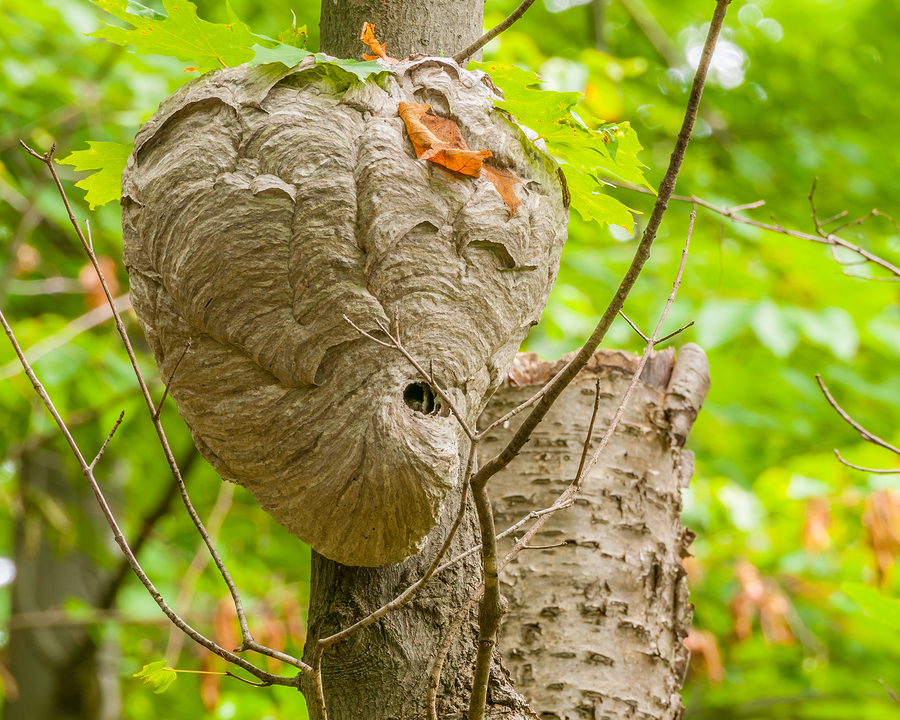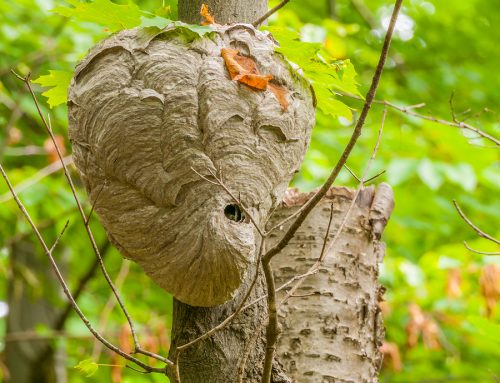Hornets are known as some of the most aggressive pests around. Perhaps you’ve been stung by one before – if so, you know how much it hurts. If you have them on your property, whether home or business, it’s important to have a professional remove the nests so they can’t hurt anyone.
What Are They?
Bald-faced hornets aren’t actually hornets at all; rather, they are aerial yellow jackets. They make paper nests made out of wood that they harvest from logs and trees, taking on a football-shaped appearance and growing larger every day. Nests can grow up to two feet long and contain hundreds of worker wasps. The nests only last about one year.
In the fall, many queens fly out of the nest to seek out a protected area for the winter, usually under some loose bark. Then in the spring, the queen finds a tree or shrub to start making another nest, first forming a small paper nest inside to contain a paper “comb.” This is where she will raise her first brood of larvae which will consist of workers who will eventually forage for food, make the nest bigger, care for the young and defend the whole colony.
How to Find a Nest
Look for nests on the branches of trees and shrubs. Sometimes they can be as high as 20 feet up in a tree but most likely you’ll see them closer to the ground within about 12 feet. While the bald faced hornet may make a nest on the side of your home, it won’t burrow its nest inside vents and under eaves like yellow jackets will.
How to Get Rid of Them
Attempting to rid your property of bald faced hornets isn’t a good DIY idea. Those pests will aggressively attack and sting anyone that threatens their safety. Even small nests can be dangerous, but big coordinated attacks don’t usually happen until the nest is quite large. At their largest, colonies can total up to 1,000 hornets.
If you do get stung, ice the area, as it will probably swell. If you are allergic to their venom, you may experience swelling in the whole face and other areas or break out in hives. Seek medical attention if you have difficulty breathing.
There are a couple of DIY approaches you can take on your own but they’re not guaranteed to work. Leave dryer sheets on or near tables, as they hate the smell. They also don’t like mothballs, cucumbers or cloves. Alternatively, you could hang a blown-up brown paper bag nearby to resemble a nest, as hornets are territorial and won’t go near areas where they suspect there is another colony.
Contact Cavanaugh’s Professional Termite and Pest Services
Your best bet it to hire a professional to get rid of your bald faced hornet problem. Contact Cavanaugh’s Professional Termite and Pest Services at one of our three locations in Freehold, Flanders and Somerville.



